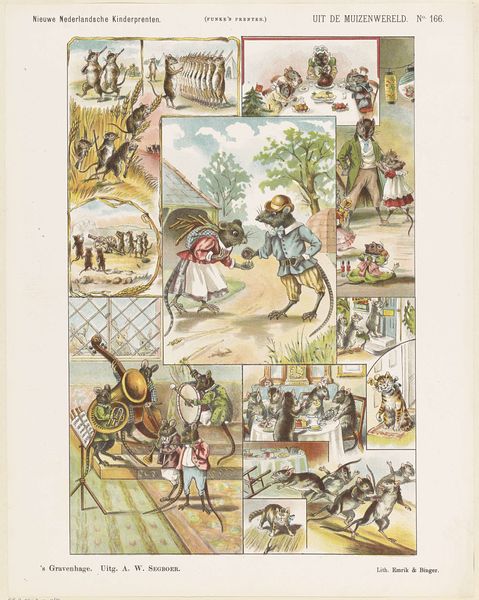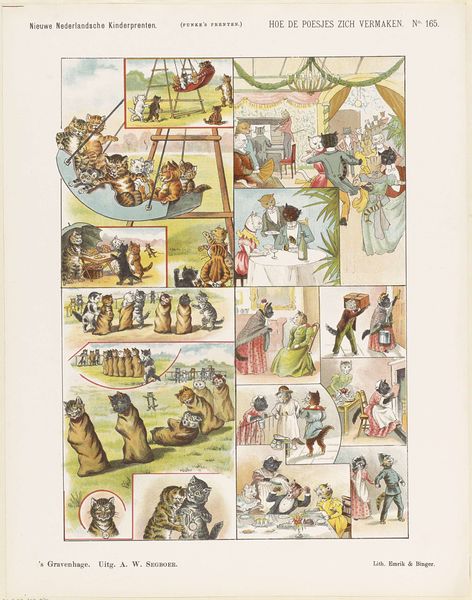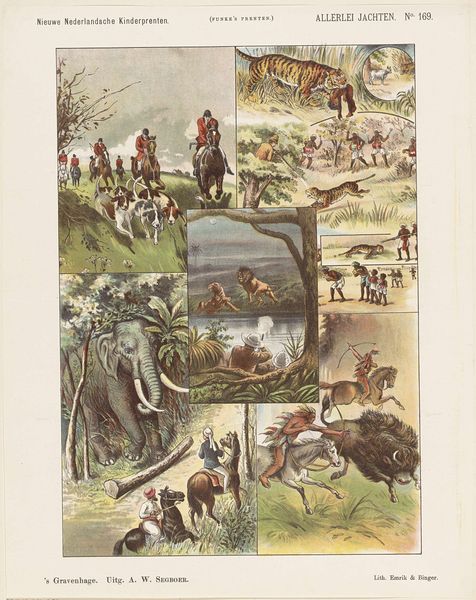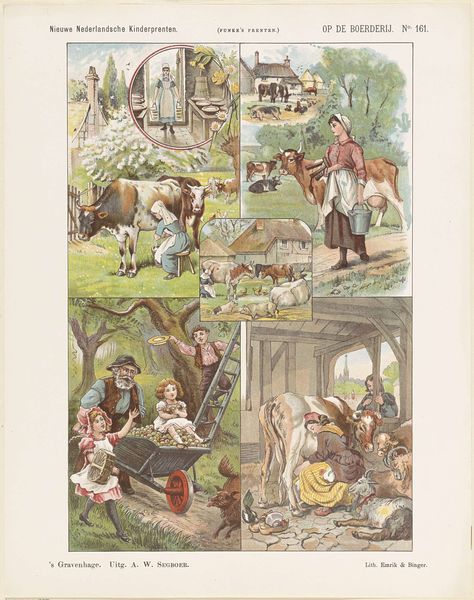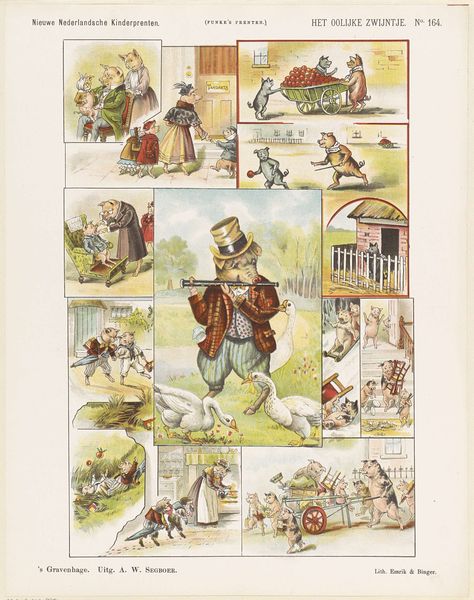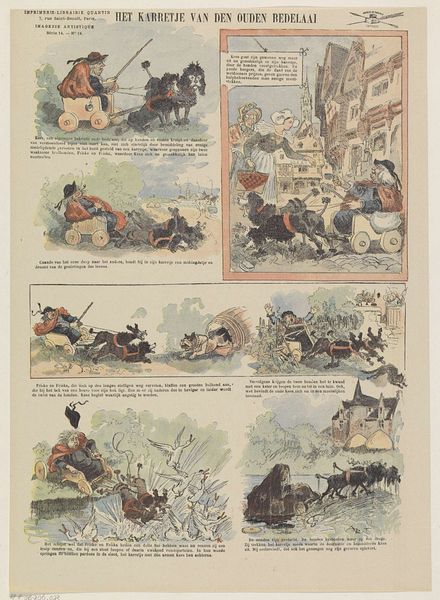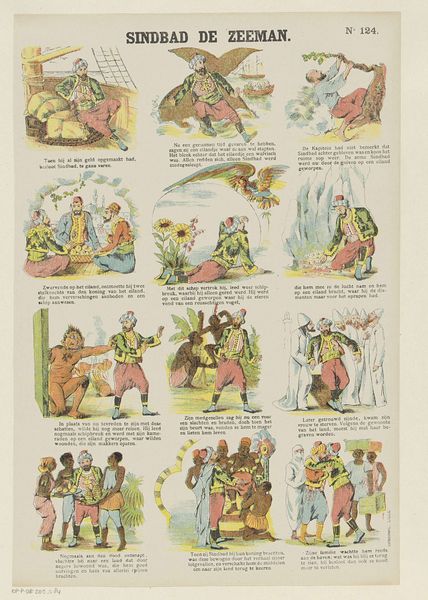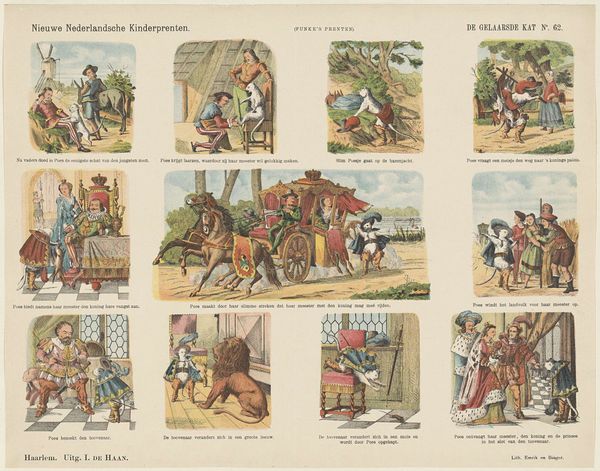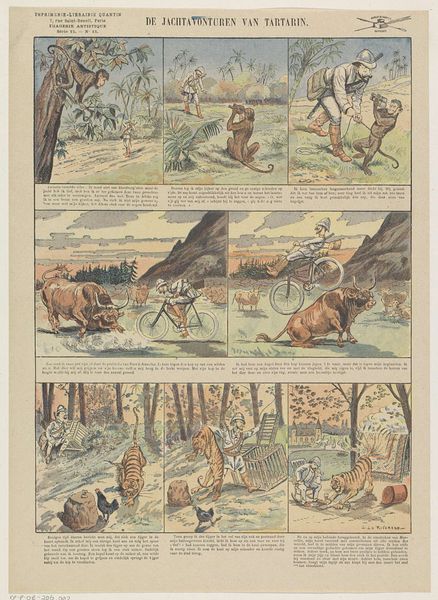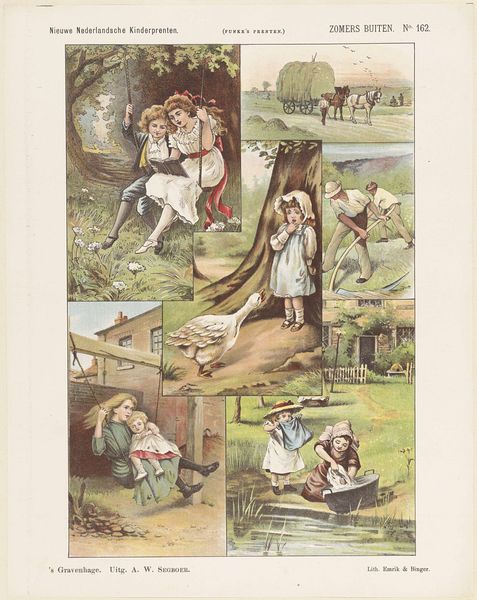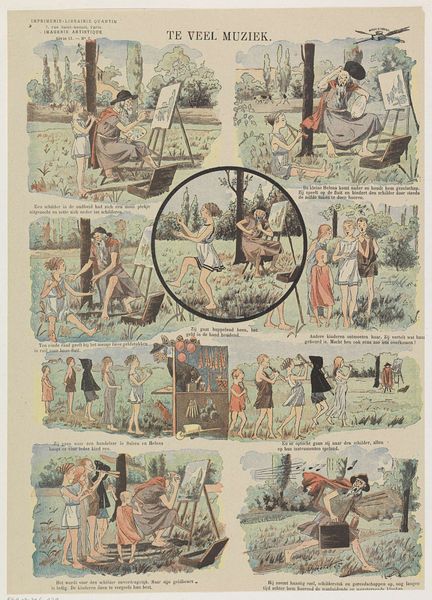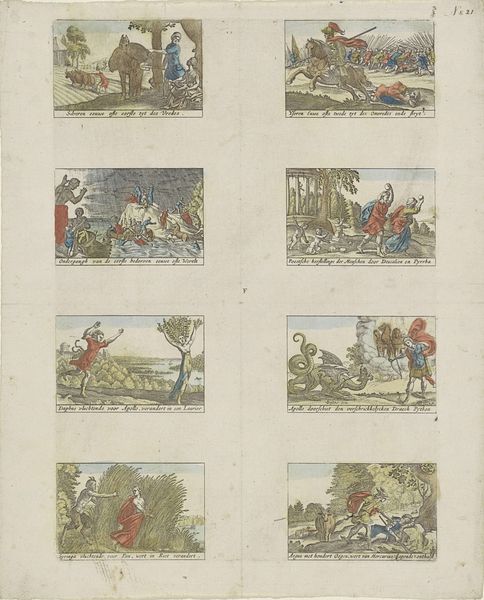
painting, print, watercolor
#
narrative-art
#
painting
# print
#
watercolor
#
folk-art
#
genre-painting
Dimensions: height 439 mm, width 348 mm
Copyright: Rijks Museum: Open Domain
Curator: This is “Oolijke Poesjes,” or “Cute Kitties,” one of Arie Willem Segboer’s charming Dutch children’s prints, dating from roughly 1903 to 1919. The media used appears to be watercolor over a lithographic print. Editor: It’s wonderfully whimsical. I love how it captures the innocence and playful nature of childhood—through the actions of kittens acting like human children! The pastel hues contribute to the artwork's soft, gentle atmosphere. It is really, really cute! Curator: Exactly! Segboer worked at a time when printmaking was becoming increasingly democratized. These weren't meant to be precious objects displayed in galleries. Their function was didactic; made to teach children good values or instruct them in everyday life. Editor: You can really read this as a narrative about socialization. These cats playing house, going to school, engaging in sports… it underscores how societal roles and norms are introduced from a young age. And look at how some activities are divided - does this say something about gendering behavior even in cute kitty-society? Curator: That's a really interesting reading, and valid given the late Victorian context in which this work appeared! But I would counter that, fundamentally, Segboer’s process was industrial—this piece involved his labor as an artist, the labor of the printmakers, and of course, the end use, with an appeal to parents' money who are purchasing education, and maybe moral instruction, for their children through inexpensive imagery. Editor: Yes, it points towards a society in flux. While tradition dictates roles, the medium allowed broader access. Perhaps it shows children, especially girls, now depicted in the light of education beyond domesticity. I wonder how this print may have served to shape conceptions of childhood during its time, presenting possibilities of female education beyond their home lives, at that time? Curator: Ultimately, I think these prints underscore that seemingly innocent images contain complex social and economic narratives. And it’s this interplay between artistic labor and consumption that provides, for me, much of this artwork’s interest. Editor: For me it's more that they can act as mirrors reflecting societal aspirations and anxieties regarding childhood, gender and play. These "Cute Kitties" are little stand-ins allowing us a different purrspective on society’s values, if you pardon my pun.
Comments
No comments
Be the first to comment and join the conversation on the ultimate creative platform.
